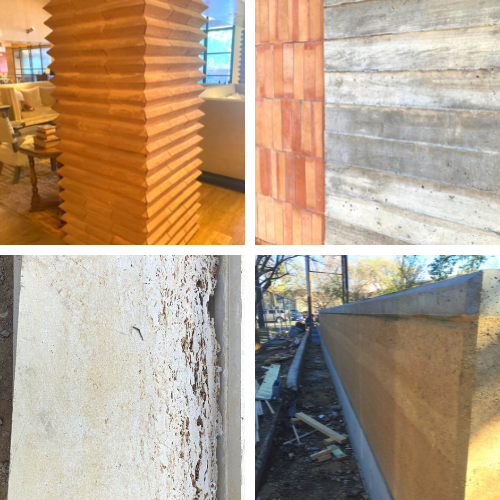Thermal mass is an important concept in architectural design, and can have a significant impact on the energy efficiency of a building. In this blog, we will explore what thermal mass is, the history of its use in architecture, how it can improve energy efficiency in buildings, what materials have thermal mass, and what types of climates are best suited to the utilization of thermal mass.
What is Thermal Mass?
Thermal mass refers to the ability of a material to absorb, store, and release heat. In a building, this means that materials with thermal mass can help to regulate indoor temperature by absorbing heat during the day and releasing it at night. This can help to maintain a more consistent indoor temperature and reduce the need for heating and cooling systems.
History of Utilizing Thermally Massive Materials in Buildings
The use of thermally massive materials in buildings dates back thousands of years. In ancient civilizations such as the Egyptians and Romans, buildings were often constructed with thick, heavy walls made of materials such as stone or adobe. These materials provided a high level of thermal mass, which helped to keep indoor temperatures cool during the day and warm at night.
In more recent history, the concept of thermal mass has been incorporated into modern architectural design. The use of materials such as concrete, brick, and stone in modern buildings can provide a high level of thermal mass, which can help to improve energy efficiency.
How Can Thermal Mass Improve Energy Efficiency in Buildings?
Thermal mass can improve energy efficiency in buildings in several ways. First, it can help to regulate indoor temperatures, reducing the need for heating and cooling systems. This can lead to significant energy savings, especially in climates with extreme temperatures.
Materials with high thermal mass can help to reduce the temperature fluctuations that occur in a building. For example, a concrete wall can absorb heat during the day and release it at night, helping to maintain a more consistent indoor temperature.
Materials with thermal mass can help to reduce the amount of energy required to heat or cool a building. By using materials that can absorb and store heat, a building can reduce the amount of energy required to maintain a comfortable indoor temperature.
What Materials Have Thermal Mass?
There are several materials that have thermal mass, including concrete, brick, stone, adobe, and rammed earth. These materials are often used in construction to provide a high level of thermal mass and improve energy efficiency.
What Types of Climates Best Suit the Utilization of Thermal Mass in Architecture?
The use of thermal mass in architecture can be beneficial in a variety of climates, but is especially effective in climates with extreme temperatures. In hot climates, materials with high thermal mass can help to keep indoor temperatures cool during the day and warm at night. In colder climates, materials with high thermal mass can help to retain heat and reduce the amount of energy required to heat a building.
Conclusion
Thermal mass is an important concept in architectural design, and can have a significant impact on the energy efficiency of a building. By using materials with high thermal mass, a building can maintain a more consistent indoor temperature, reduce the need for heating and cooling systems, and reduce the amount of energy required to maintain a comfortable indoor environment. Materials such as concrete, brick, stone, adobe, and rammed earth all have thermal mass and can be used to improve energy efficiency, thermal comfort and sustainable building practices.
Read More:
https://www.yourhome.gov.au/passive-design/thermal-mass
https://www.paho.org/cub/dmdocuments/RED%20VIV%20Thermal%20Mass.pdf
https://theconstructor.org/building/thermal-mass-passive-solar-building/562355/



